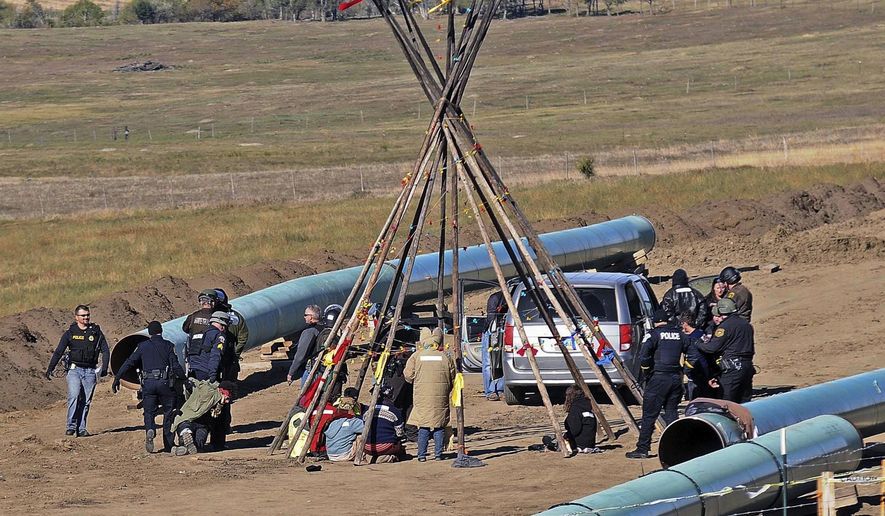BISMARCK, N.D. (AP) — A federal judge ruled Wednesday that the Dakota Access oil pipeline can continue operating while a study is completed to assess its environmental impact on an American Indian tribe.
U.S. District Judge James Boasberg’s decision will come as a blow to the Standing Rock Sioux, who have argued that an oil spill from the pipeline under Lake Oahe - from which the tribe draws its water - could have a detrimental effect on the tribal community.
The $3.8 billion pipeline built by Energy Transfer Partners has been operating since June 1, moving oil from western North Dakota through South Dakota and Iowa to a distribution point in Illinois. From there it can be shipped to the Gulf Coast and potentially lucrative markets abroad. It has the capacity to move half of the oil produced daily in North Dakota, the nation’s second-leading producer behind Texas.
President Donald Trump had pushed for the pipeline’s completion, and the Army Corps of Engineers dropped a plan to conduct more environmental study after he took office. The Corps permitted the pipeline project.
Boasberg ruled on June 14 that the Corps largely complied with environmental law in giving its permission but that it didn’t adequately consider how an oil spill under the Lake Oahe reservoir on the Missouri River in the Dakotas might affect the Standing Rock Sioux. The tribe is among four that have challenged the pipeline in court over environmental fears that Texas-based ETP says are unfounded.
The judge said the Corps also didn’t adequately study how the pipeline might disproportionately affect the tribal community - a concept known as environmental justice. That aims to ensure development projects aren’t built in areas where minority populations might not have the resources to defend their rights.
In its analysis of the Missouri River crossing, the Corps studied the mostly white demographics in a half-mile (0.8-kilometer) radius, which the agency maintains is standard. But if the agency had gone another 88 yards (80 meters) - about the length of a football field - the study would have included the Standing Rock Reservation. The tribe accused the Corps of gerrymandering.
Boasberg ordered the Corps to reconsider certain areas of its environmental analysis, and took arguments on whether to shut down the 1,200-mile (1,930-kilometer) pipeline while the work is done. Boasberg said earlier this summer that such a move “would carry serious consequences that a court should not lightly impose.”
ETP and the Corps argued against a shutdown. Corps attorneys said the agency expects to be able by the end of the year to substantiate its earlier determination that the pipeline poses no significant environmental threats. ETP maintained that a shutdown would cost it $90 million monthly, and significantly disrupt the broader energy industry as well as state and local government tax revenue. Their assertion is backed by numerous energy trade groups.
Tribal attorneys argued that the company had overstated the potential effects of a shutoff and questioned whether the Corps will take the additional review seriously, saying a shutdown would create incentive for the agency to do so.
The tribes also proposed a fallback plan if Boasberg decided against a shutdown. It included increased public reporting of pipeline issues such as repairs, and implementation of a spill response plan - including equipment staging - at Lake Oahe.




Please read our comment policy before commenting.